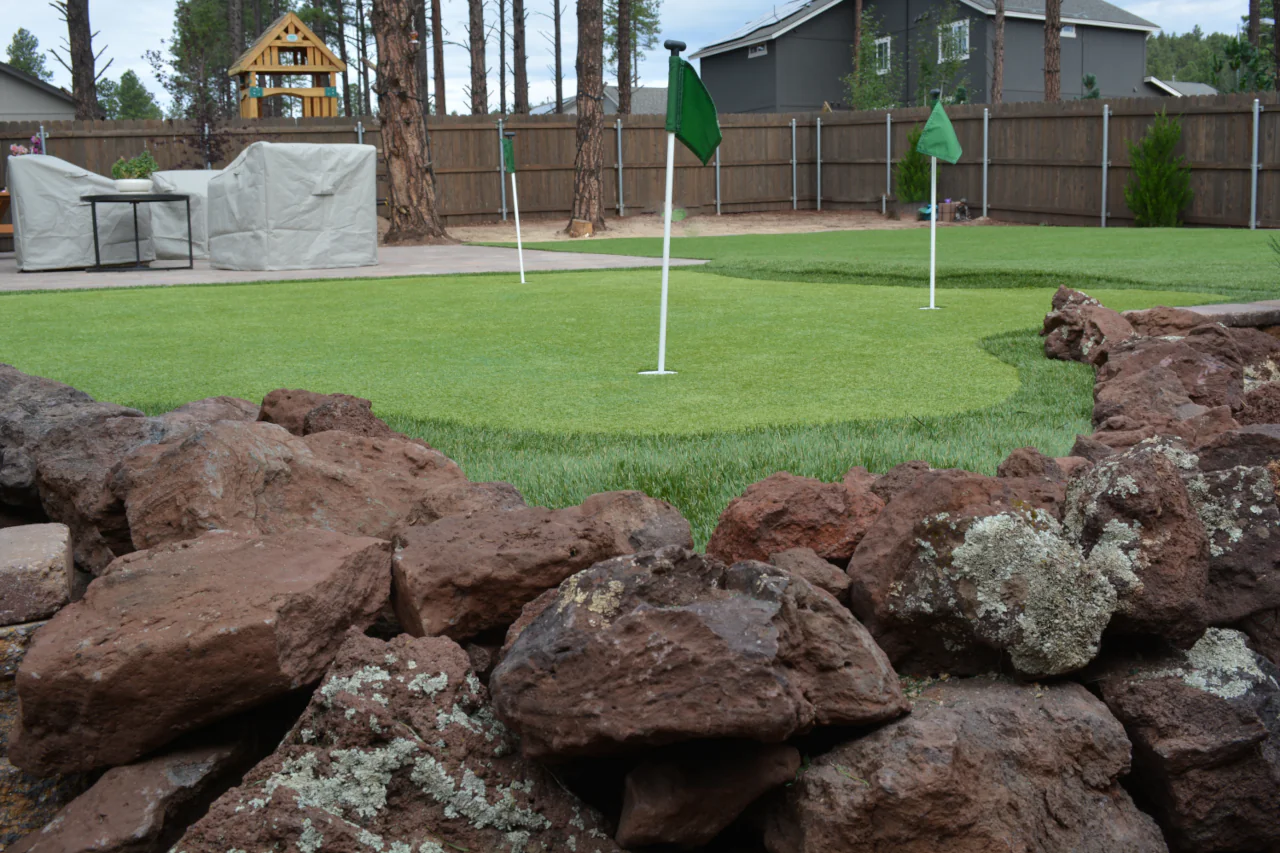How to Design a Three-Hole Practice Green

A three-hole practice green gives you a simple, enjoyable way to sharpen your short game without taking over the entire yard. This guide covers a smart layout, easy pin placement ideas, which types of turf work best for a backyard putting green setup, and quick, repeatable drills. Sprinkle in a bit of imagination and a regular practice schedule, and you’ll be getting more confident strokes in no time.
SIZE, SHAPE, AND HOW IT FITS THE YARD
Start by mapping a flat or gently sloped area that doesn’t interfere with driveways, flower beds, or heavy foot traffic. A typical three-hole green can be built in about 300–700 sq. ft., depending on how much walking you want between holes. Think of three areas that create varied approach angles: a short straight putt, a mid-length shot across a subtle slope, and a challenging long-break putt.
If you plan a complete synthetic grass installation, pick a spot with strong sun and consider how the runoff will drain there. Proper base preparation keeps the surface smooth and helps the turf play like natural greens. If you’re working with limited space, alternate hole positions so each one feels unique without needing much extra material.
SMART LAYOUT IDEAS TO ENHANCE PRACTICE
Vary distances: aim for one short-range hole (6–10 ft.), one mid-range hole (12–18 ft.), and one extended putt (20–35 ft.). That range necessitates different putting speeds and precision.
Use subtle contours: small mounds or gentle hollows add variety without requiring major grading.
Create approach area options: include a small chipping area beside one hole so you can practice pitch-and-putt combinations.
Edge details: a low-profile roll-up edge or sand trap adds extra difficulty and clean edges.
Throughout the layout process, share your preferred installation style — whether you want a full synthetic turf base or a hybrid renovation — because turf varieties act differently depending on prep work.
PIN PLACEMENT THAT KEEPS PRACTICE FRESH
Rotate pin locations every session. Move pins to the front, middle, and back to create fresh angles. A simple system: ABC pin rotation where A = front-third, B = middle, C = back. For extra challenge, place a temporary pin on the side of a gentle slope to improve slope reading.
Use removable cups or movable pin sets so you can adjust pin locations without damaging the turf. Changing pins on synthetic turf putting greens is quick and lets you mimic tournament challenges in a Oakley backyard setting.
SHORT PRACTICE ROUTINES FOR BUSY LIVES
No need for extended training sessions. Try three simple drills that fit the three-hole layout:
Speed Ladder (6–12 minutes): Start at the short hole and putt three balls from each distance band—short, mid, long—focusing on a consistent stroke length for each distance.
Break Read Drill (8–12 minutes): From a set position, putt to each of the three holes with the pin in a new position. Work on analyzing contours and adjusting pace.
Pressure Finish (5–8 minutes): Make two-putt rounds around the three holes. If you two-putt all three, reward yourself with a harder approach next round.
Short routines like these keep your improvement consistent and make practice habit-forming. Mix them throughout the week for balanced skills.
